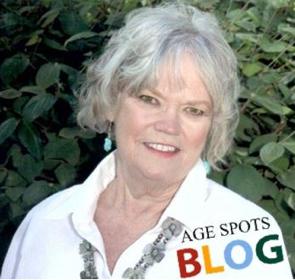
Submitted by
Ruth Dockins
I have had questions recently regarding ambulance services for people on Medicare so I thought this might be a good subject for my Age Spots article. Some of the following information is republished with permission from the Medicare Rights Center, for more information visit www.medicarerights.org .
Medicare covers emergency ambulance services as long as the service is medically necessary. Keep in mind that Medicare considers the event to be an emergency when your health appears to be in serious danger and every second counts to prevent your health from getting worse. If you need to be taken to the hospital due to a medical emergency, Medicare will cover your ambulance ride to the nearest appropriate hospital, as well as any medical services you receive while you are in the ambulance. This does not necessarily mean that Medicare will pay for transportation back to where you are living, because ambulance service is not medical transportation but is emergency medical transportation.
If you need to be taken to a hospital or facility for non-emergency medical services, Medicare will cover your ambulance ride, only on rare occasions. Medicare may cover non-emergency ambulance services if:
· You are unable to get up from your bed without help, unable to walk, and unable to sit in a chair or wheelchair, or
· You need medical services during the trip that are only available in an ambulance and all other forms of transport could harm your health.
For example, Medicare may cover non-emergency ambulance rides to and from a dialysis facility for someone who has kidney failure and needs medical services that can only be provided during the ambulance ride. Also, in order for Medicare to cover non-emergency ambulance rides, a doctor must confirm that the ambulance service is medically necessary. If the ambulance company believes that Medicare won’t pay for your non-emergency ambulance service, they might ask you to sign an Advance Beneficiary Notice (ABN). If you sign the ABN you are responsible for paying the cost of the trip if Medicare doesn’t pay, but you have the right to appeal Medicare’s decision.
If you refuse to sign the ABN, the ambulance company can decide whether or not to take you by ambulance. If they decide to take you after you refuse to sign, you may still be responsible for paying the cost of the trip if Medicare doesn’t. You will not be asked to sign an ABN in an emergency situation.
Know that lack of access to other forms of transportation, alone, does not mean that Medicare will cover your ambulance services. If you have other questions regarding this article please contact me at 1-800-392-8771 or 335-3331.
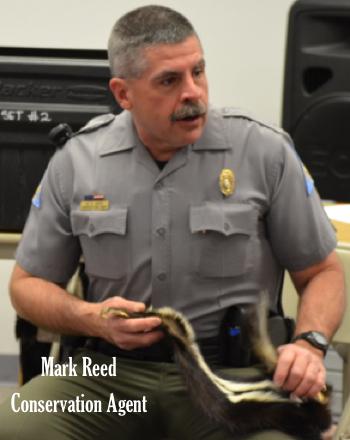
Submitted by
Mark Reed
Stoddard County, Missouri - Feral hogs have been in the news quite often the last few years. In early April, a landowner near Bell City reported hogs damaging his pasture and wildlife food plots. Other folks in the area reported seeing a group of hogs several times. The Department of Conservation has staff to assist landowners with hog problems and we were working with this landowner when a motorist may have taken care of the problem.
One morning a young man reported hitting several hogs with his truck. I went for a look and sure enough found 8 dead feral hogs. I have not received any more reports so hopefully there are no more hogs in that area. Over the past few years’ feral hogs have been killed in several locations around Stoddard County and counties to the west. Biologists believe there is a population of feral hogs living on Mingo National Wildlife Area and Duck Creek Conservation Area. Staff recently deployed a helicopter to that area in hopes of eliminating several hogs. Only one boar was found and dispatched but evidence of other hogs was present.
Missourians Should Be Concerned
First of all, feral hogs are extremely destructive animals and will eat and destroy wild turkey nests and eggs, fawn whitetail deer, any ground nesting bird or animal, wildlife food plots, agricultural crops, gardens, pastures, hay fields, and pretty much anything else they find including wild foods needed by deer and turkey. Secondly, these hogs are not native animals and are being brought here and released by folks hoping to establish populations.
Some people enjoy hunting feral hogs but most sportsmen are not willing to sacrifice our native wildlife. The economic expense hogs bring with them is hard to estimate, but in addition to their destructive ways, feral hogs may carry any of 32 diseases. Some of these diseases can be transmitted to wildlife and domestic livestock. In addition, swine brucellosis can infect people through handling of feral hog carcasses.
It does not take many hogs to establish a population. Feral hogs can reproduce before they reach one year of age and may have two to three litters each year. Litter size can range from six to eight piglets. Research in southern states indicates that to control a hog population, approximately seventy percent of the hogs must be destroyed annually. Remember, seventy percent harvest will only keep a hog population in check.
Feral hogs are not wildlife in Missouri but some hunting regulations do apply if you are in the field pursuing hogs. Feral hogs may not be released on public land or on private land that is not adequately fenced to contain them. Each hog released represents a separate offense and the release of several hogs can result in felony charges with fines of up to $5000 and an additional $1000 per hog administrative penalty through the Department of Agriculture.
We do not want hogs in Missouri and the Department of Conservation is working towards eradicating this threat to our natural resources and agricultural crops. If you know of someone releasing feral hogs, please call the Operation Game Thief Hotline at 1-800-392-1111.
If you have questions regarding this or other conservation topics, give me a call at 573-421-3240. The Department of Conservation no longer directs hunters to suspected populations of feral hogs. If we locate hogs we will try to destroy them as quickly as possible before they move to a new area.
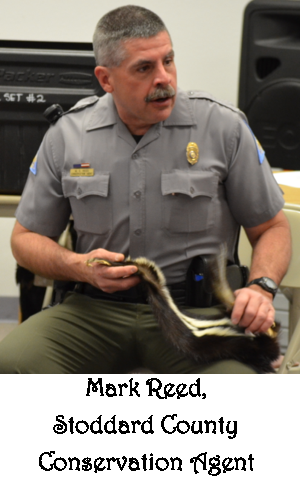
Submitted by
Mark Reed
Dexter, Missouri - The 2013 spring turkey season is in the books here in Missouri. Statewide hunters harvested 42,220 turkeys, which is an increase of 1,773 from 2012. Stoddard County turkey hunters bagged a total of 304 birds in 2013 compared to 302 last year. The county total includes turkeys harvested during the two day youth seasons. Statewide the Missouri turkey population is strong and surveys show our bird numbers are doing well on the heels of a couple good hatches.
Crappie fishing has been spotty. Weather fronts can make crappie fishing unpredictable as water temperatures fluctuate. Crappie tend to become more active and spawning behavior begins once water temperatures reach the mid 50’s.
Otter Slough anglers have had more consistent success while crappie fishermen at other area lakes report tougher conditions. Anglers should note that the crappie length limit has been eliminated on Otter Slough. All other Otter Slough fishing regulations remain the same and length limits on other area lakes are still in place.
Before a crappie length limit is put in place, biologists must determine the rate of growth on a given lake. Crappie must reach the proposed size within four years or a length limit will not be established. Otter Slough crappie were hitting nine inches in their third year which is excellent growth, however, not many lived long enough to reach that size. Crappie harvest on Otter Slough is so heavy that before the length limit few fish lived long enough to reach quality size. The first couple years the length limit was in place, anglers were able to harvest larger fish, however, crappie have become stunted and very few fish now reach the nine inch length limit.
Biologists believe competition is too great in the lake and too many small crappie are now present. Crappie growth rates will not improve until some are harvested. Hopefully we will see some larger fish within a year or two.
Our cool, wet spring has been a boon to morel hunters. Mushrooms need a little moisture followed by sunny days with night temperatures above 50 degrees. Many folks report this spring as the best mushroom year they can remember. Mushrooms can be harvested on most Department of Conservation areas but remember to ask before entering private land. Trespassing is a crime regardless of why you enter private property. Also remember that private land does not have to be posted in order for a person to be charged with trespass.
If you are not certain of how to identify morels, the Missouri Department of Conservation has an excellent publication, which can help you identify several types of edible mushrooms found in Missouri. To receive a copy of the publication, contact any Missouri Department of Conservation office.
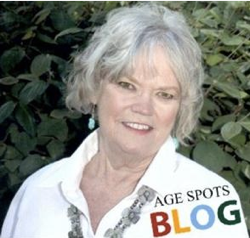
Submitted by
Ruth Dockins
Durable medical equipment and supplies are things such as oxygen, walkers, or wheelchairs and other similar items.
There is a program through Medicare called the Durable Medical Equipment, Prosthetics, (DEMEPOS) program. The first round of the program went into effect in nine areas of the country on January 1, 2011, reducing money spent for equipment included in the program by over 42 percent in its first year of operation while maintaining access to quality equipment and supplies.
Now the program’s benefits are coming to people with Original Medicare near you, and there is some important information you need to know. Round 2 of the program is scheduled to begin on July 1, 2013, and expands it to 91 additional areas across the country. These areas can be found in the fact sheet at http://www.cms.gov/Outreach-and-Education/Outreach/Partnerships/Downloads/DMEPOSBeneFactSheetMarch2013.pdf. The area nearest to the 18 counties of SEMO AAA’s service area is St. Louis, MO.
When the program starts, people with Original Medicare who live in or travel to one of these areas and need the items listed below will likely need to get these items from contract suppliersif they want Medicare to help pay, unless their current suppliers decide to become grandfathered suppliers (non-contract suppliers that choose to continue to provide certain rented medical equipment or oxygen under the terms of the program).
So people will need to find out which suppliers are Medicare contract suppliers to make sure Medicare can help pay for their medical equipment or supplies. You can find out if a supplier is a contract supplier for the program by visiting http://www.medicare.gov/supplierdirectory/search.html or by calling 1-800-MEDICARE (1-800-633-4227).
The 8 product categories that are included in Round 2 of the program are:
- Oxygen, oxygen equipment, and supplies;
- Standard (power and manual) wheelchairs, scooters, and related accessories;
- Enteral nutrients, equipment, and supplies;
- Continuous Positive Airway Pressure (CPAP) devices, Respiratory Assist Devices (RADs) and related supplies and accessories;
- Hospital beds and related accessories;
- Walkers and related accessories;
- Support surfaces (Group 2 mattresses and overlays); and
- Negative Pressure Wound Therapy pumps and related supplies and accessories.
In addition to the categories of items listed, Medicare will be starting a national mail-order program for diabetic testing supplies at the same time as Round 2. The national mail-order program will include all parts of the United States, including the 50 States, the District of Columbia, Puerto Rico, the US Virgin Islands, Guam, and American Samoa.
When the national mail-order program starts, people with Original Medicare will need to use a contract supplier for diabetic testing supplies delivered to their homes. This means even if you purchase your diabetic supplies from a local drug store if they mail it to you they must be a contracted supplier but if you go to the drug store and pick up the supplies they do not have to be a contracted supplier at this time.
Starting May 13, 2013, Medicare is mailing information to those who use diabetic testing supplies across the country. Please call me if you have questions at 1-800-392-8771 or locally at 573-335-3331.
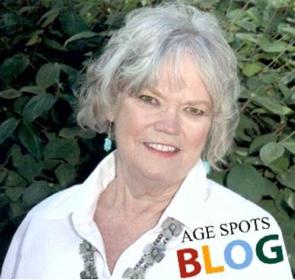
Submitted by
Ruth Dockins
PR Medicare Reward Program and Provider Enrollment
Health and Human Services Secretary Kathleen Sebelius today announced a proposed rule that would increase rewards paid to Medicare beneficiaries and others whose tips about suspected fraud lead to the successful recovery of funds to as high as $9.9 million. In addition, a new funding opportunity released this month supports the expansion of Senior Medicare Patrol (SMP) activities to educate Medicare beneficiaries on how to prevent, detect and report Medicare fraud, waste and abuse.
“President Obama has made the elimination of fraud, waste and abuse, particularly in health care, a top priority for the administration,” said Secretary Sebelius. “Today’s announcement is a signal to Medicare beneficiaries and caregivers, who are on the frontlines of this fight, that they are critical partners in helping protect taxpayer dollars.”
Over the last three years, the administration has recovered over $14.9 billion in fraud, some of which resulted from fraud reporting by individuals – a proven tool in helping the government detect fraud, waste and abuse in the Medicare program. Under the proposed changes, a person that provides specific information leading to the recovery of funds may be eligible to receive a reward of 15 percent of the amount recovered, up to nearly $10 million. HHS currently offers a reward of 10 percent up to $1,000 under the current incentive reward program. The changes are modeled on an IRS program that has returned $2 billion in fraud since 2003.
The proposed rule would also strengthen certain provider enrollment provisions including allowing HHS to deny enrollment of providers who are affiliated with an entity that has unpaid Medicare debt, deny or revoke billing privileges for individuals with felony convictions, and revoke privileges for providers and suppliers who are abusing their billing privileges.
The SMP is a national, volunteer-based program that empowers Medicare beneficiaries to prevent and report Medicare fraud, waste, and abuse. Since 1997, more than 3.5 million beneficiaries have learned how to recognize and fight fraud and abuse, and more than 7,000 referrals have been made to the Centers for Medicare & Medicaid Services and the Office of the Inspector General for investigation.
To expand the SMP program’s capacity to reach more Medicare beneficiaries, the Administration for Community Living issued a new funding opportunity. Each of the current 54 SMP projects is eligible for varying funding levels, up to a total of $7.3 million across the program.
These proposed changes will support the administration’s comprehensive approach to program integrity, including the work being done with the Health Care Fraud Prevention and Enforcement Action Team, a joint effort between HHS and the Department of Justice to fight health care fraud. This joint effort recovered a record $4.2 billion in taxpayer dollars in fiscal year 2012.
To read a fact sheet about today’s proposed rule visit: http://www.cms.gov/apps/media/fact_sheets.asp

